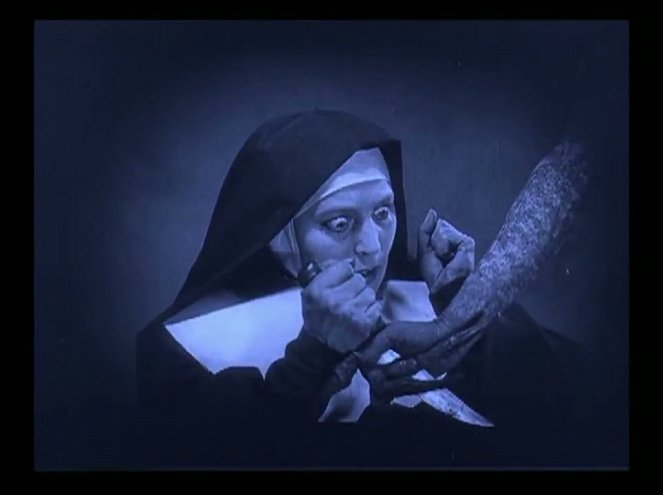Reżyseria:
Benjamin ChristensenScenariusz:
Benjamin ChristensenZdjęcia:
Johan AnkerstjerneObsada:
Maren Pedersen, Clara Pontoppidan, Elith Pio, Oscar Stribolt, Tora Teje, Benjamin Christensen, Poul Reumert, Karen Winther, Kate Fabian, Else Vermehren (więcej)Opisy(1)
W swym najpopularniejszym filmie B. Christensen, łącząc dokument z fabułą, bierze na warsztat średniowieczne opętanie czarownicami. Ukazując ilustracje z epoki, daje najpierw widzowi wgląd w świat wyobrażeń owych czasów, aby następnie, juz w scenach sfabularyzowanych, przedstawić plastycznie wiarę w czarownice: kobiety te pokazuje w trakcie warzenia miłosnego napoju, przed kontaktem z diabłem czy przy denuncjacji przez ich współtowarzyszki. W końcu na ekranie ukazują się narzędzia tortur... (FlixClassic)
(więcej)Materiały wideo (2)
Recenzje (3)
A remarkable example that already in the early 1920s cinema could be used as a tool of manipulation to produce excessive subjective expressions and shocked viewers. Christensen has a solid concept and a great set design, thanks to which some of the scenes and ideas remain effective even after a hundred years, but the documentary format packed with headlines and pointers is quite annoying and interpretively barren. Naturally, I agree with the condemnation of the Inquisition and I admire the craftsmanship, but the combination of a narrative and an explicitly descriptive approaches did not impress me so much, so 4* mainly out of respect for the creator’s courage at that time. 70%
()
A rarity among films of the silent era. To some extent, it’s a fascinating comprehensive look at the history of witchcraft, divided into seven parts. The first is a brief excursion, using static images and a pointer, into the medieval naive view of the Earth and the universe and the contemporary view of the phenomenon of witchcraft. The fascinating spectacle begins from the second part, when Christensen, with the help of actors and a perfect period set, presents a fictional reconstruction of the phenomenon. Witches fly around on broomsticks, attend satanic ceremonies, spit and step on the sign of Christ, cook toddlers in cauldrons, ritualistically kiss the Devil's anus as the Devil's mistresses, give birth to little devils, urinate in bowls and then pour the urine over the neighbour's door to put a death curse on him. We also see the disgusting methods of the Inquisition, their trials and interrogations using torture, various superstitions of the time such as the cursing of a husband's bed with a rope full of knots, where one knot means the thwarted conception of an offspring, etc. In the last part Christensen moves to the present and presents bizarre analogies between hysteria and witchcraft, as well as mental disorders and various conditions such as sleepwalking, kleptomania, etc., thus reinforcing his sceptical view of superstitions about witchcraft.
()
The film's primary intention is not to evoke horror, yet many scenes are indeed frightening, not in their depiction, but primarily in their consequences. The film avoids direct portrayal of violence, yet it is very effective in its tone and is one of the documentaries that truly excels in focusing on the given period.
()
Galeria (60)
Photo © Kino International



Reklama